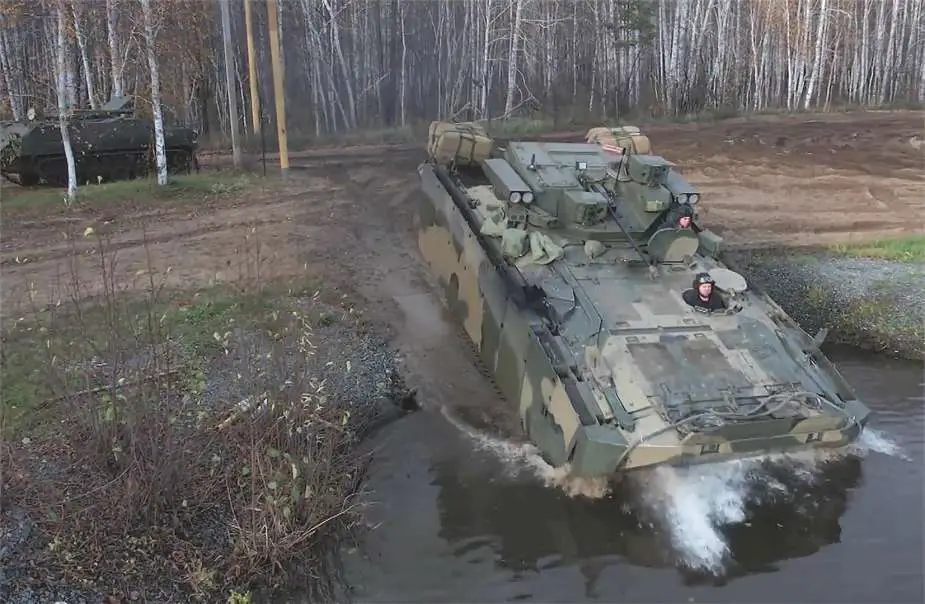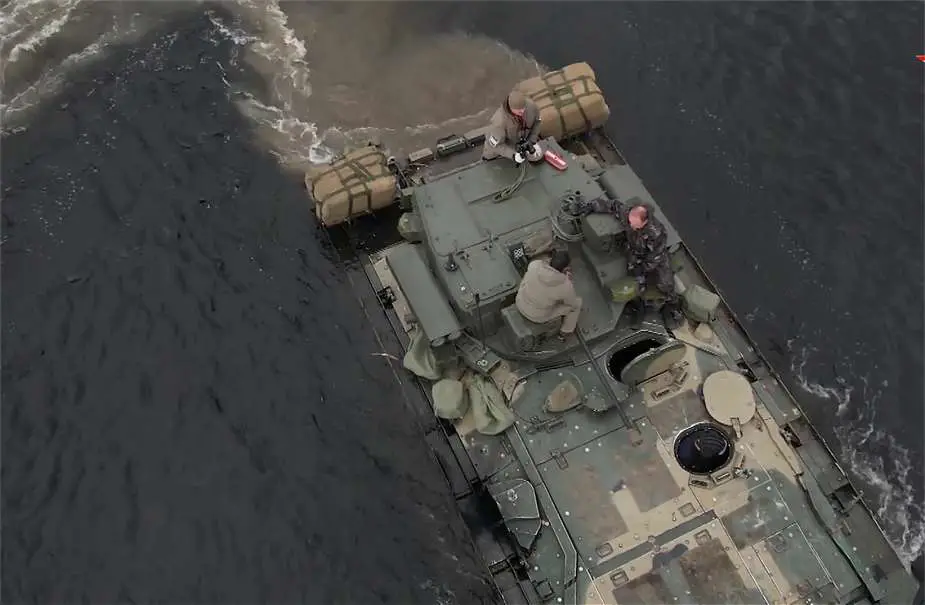Russia Conducts Amphibious Capability Tests with Its New Tracked Armored Kurganets-25 IFV
Despite the war in Ukraine, the Russian defense industry continues to develop a new generation of combat vehicles including the Kurganets-25, the latest generation of Russian-made tracked armored IFV (Infantry Fighting Vehicle). Recently, a video was published on Russian social networks showing amphibious capabilities tests of a new version of the Kurganets-25.
Follow Army Recognition on Google News at this link

Russia recently conducted amphibious capability tests with its new Kuragnets-25 tracked armored IFV Infantry Fighting Vehicle. (Picture source Russian TV video footage)
The Kurganets-25 is a Russian infantry fighting vehicle (IFV) that was developed as part of Russia's extensive military modernization program following the Cold War. This program aimed to replace aging Soviet-era military hardware with more advanced and technologically sophisticated equipment.
Initiated in the early 2000s, the development of the Kurganets-25 was driven by the need for a new generation of armored vehicles that could provide enhanced protection, mobility, and firepower. The Russian military sought a modular vehicle that could be adapted for various roles, including IFV, an armored personnel carrier (APC), and a command vehicle.
The Kurganets-25 made its public debut during the 2015 Moscow Victory Day Parade, signaling its readiness to enter service with the Russian armed forces. This introduction marked a key milestone in Russia's ongoing efforts to modernize its military capabilities.
The design of the Kurganets-25 reflects a significant departure from older Soviet designs. It features a more modern and digitized control system, improved armor, and an active protection system designed to counter various threats, including anti-tank guided missiles. The vehicle is also equipped with a remote-controlled weapon station, which can be armed with a 30mm cannon and a coaxial machine gun, as well as anti-tank missiles.
Following its introduction, the Kurganets-25 has undergone various testing and evaluation phases. The Russian military has been assessing its performance in different conditions to ensure that it meets the high standards required for modern combat operations. The vehicle's modular design allows for ongoing upgrades and modifications, ensuring that it can be adapted to meet future battlefield requirements.

The Kurganets-25 is propelled in the water thanks to two waterjets mounted at the rear of the hull. (Picture source Russian TV video footage)
The Kurganets-25 has been meticulously engineered to possess exceptional amphibious capabilities, which play a crucial role in its operational versatility. These features enable the vehicle to perform effectively in diverse environments, including significant water obstacles, enhancing its utility in various military operations.
Central to its amphibious design is the vehicle's natural buoyancy. This is achieved through a carefully sealed hull combined with the use of lightweight, yet robust materials in its construction. The buoyancy is such that when the Kurganets-25 enters a water body, it is capable of floating without the need for extensive preparatory modifications. This attribute is critical for rapid and seamless transitions from land to water-based operations, a feature that sets it apart from many traditional armored vehicles which often require substantial preparation for amphibious activities.
For propulsion in water, the Kurganets-25 is equipped with specialized water jets or propellers. These enable the vehicle to maneuver effectively in aquatic environments, ensuring it maintains a good level of mobility and speed while afloat. This capability is not just about crossing water bodies; it also allows the vehicle to partake in more complex operations such as amphibious assaults.
The integration of these amphibious features into the Kurganets-25 reflects a significant engineering achievement. It ensures that the vehicle can operate across a wide range of combat environments, thereby enhancing the strategic flexibility and capability of the forces employing it. This amphibious functionality is part of the broader design philosophy of the Kurganets-25, which emphasizes versatility, adaptability, and effectiveness in a variety of combat scenarios.
Defense News January 2024




























